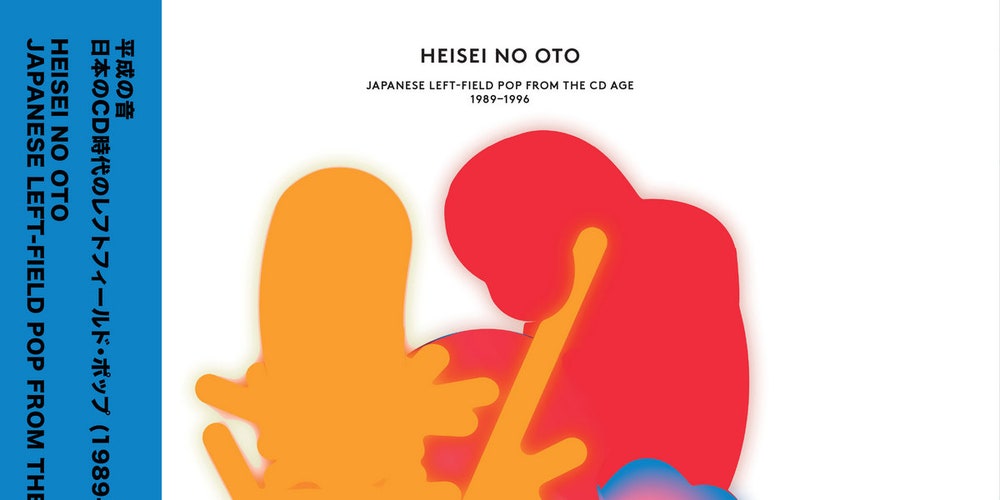It’s almost impossible to talk about the renewed interest in Japanese music in the West without invoking the YouTube algorithm. The meteoric rise of city pop, as well as the ambient music that’s come to be known as environmental music, seems propelled by its musical merit and the allure of its imagery in equal parts. The striking photo of Mariya Takeuchi by Alan Levenson adorning the upload of “Plastic Love”—effectively the official anthem of city pop, with 56 million views and counting—has inspired fanart and cosplay. (The song itself has been covered in a number of different languages, and has recently even appeared in a Calvin Klein ad campaign.) The most beloved environmental music, similarly, seems to trade on an image of mindfulness and mystique; check the comments of any popular video and you’ll see tons of messages about singing trees and aligned chakras. But what about the music not so easily filed under an “aesthetic”? An unfathomable amount of Japanese music will fall through the cracks, simply because it lacks the unspoken qualities that make some things go viral.
Norio Sato and Eiji Taniguchi, the owners of Osaka record stores Rare Groove and Revelation Time, respectively, are interested in putting in the legwork to find lost treasure themselves. Though their stores primarily deal in vinyl—and there’s plenty of gems yet to be uncovered on vinyl—the format represents only a portion of what’s left to be discovered. The CD became the primary format for major labels in Japan in 1989, and by the mid-’90s had become the only format for many releases. Sato and Taniguchi, constantly on the lookout for songs that haven’t been heard by many, turned their digging efforts to things that exclusively existed on CD—and Heisei No Oto: Japanese Left-field Pop from the CD Age, 1989-1996 is the result of their archaeology.
Heisei No Oto’s mission statement of “left-field pop” is an intentionally vague descriptor, housing samplings of dance, new age, electronic music, and more under its umbrella. Rather than zero in on a niche sound, such as Light in the Attic’s city pop or environmental music compilations, it casts a wide net that broadly surveys Japan’s pop music landscape of 1989 to 1996. It’s the sort of big picture thinking that makes sense for a couple of record store owners with keen eyes for what moves through the circulatory system of their shops. Songs by artists now known the world over, like Haruomi Hosono and Toshifumi Hinata, sit alongside names you’re less likely to recognize, presented with the same acclaim. Heisei No Oto explores an inflection point in Japanese pop music where changes in technology brought changes in sound. The production of music on CD ramped up around the same time that synthesizers were getting cheaper and easier to experiment with—not only for artists working in the mainstream, but also the ones on the fringes.
The tracks that veer furthest to the left of field feel like the star players; “Yeelen” by Love, Peace & Trance—Haruomi Hosono’s excellent 1995 foray into hippie mysticism—is a cavernously wide-open ode to inner peace with a spoken monologue guiding you through a meditation. “Phlanged Vortex” by Friends of Earth and Interior alum Eiki Nonaka is another blissful highlight, with soft percussion, whistles simulating bird song, and smooth tenor saxophone played by the inimitable Yasuaki Shimizu. Even the less offbeat tracks, like pop star Yosui Inoue’s “Pi Po Pa,” follow the underlying theme—its brisk, funky bassline puts it in the camp of easy listening, but the kalimba melody and misty synth washes throughout make it just a little bit weird.
Fumihiro Murakami’s “Miko”—a deluge of synth twinkles, whooshes, and waves—was hand-selected by Haruomi Hosono for inclusion on 1995’s École, a compilation of amateur artists. The track would appear again on Strange Flowers Vol. 1 for Daisyworld Discs in 2003—a label Hosono created strictly for music that he likes. Kina Tomoko’s “INK,” one of the strongest standouts, puts her distinctive singing against a backdrop of traditional percussion and electronics that evokes the past while facing the future. Her vocal style developed from the folk songs that she heard as a young girl—she performed at some of the most popular minyo clubs in Okinawa at the age of 15, and would eventually join Champloose, one of Okinawa’s most famous bands. Yasuaki Shimizu wrote and produced the track, and ubiquitous songwriter Kenzo Saeki penned the lyrics. Heisei No Oto represents a passing of the guard, featuring several tracks in which established musicians offer their talents to fledgling artists, but leave them plenty of space to flourish.
There’s nothing here as immaculately polished as Hiroshi Sato’s sparkling pop diamond “Say Goodbye” or as transcendentally peaceful as Hiroshi Yoshimura’s “Blink.” The new technology, new ideas, and newfound ambition of the CD age coalesced into an experimental spirit that can be identified, but not so clearly defined. That resistance to being easily sorted into playlist-friendly vibes is probably why these songs aren’t likely to show up in your YouTube recommendations. Rather than a mood, Heisei No Oto builds a narrative—one that tells the story of a rapidly changing Japan, and of acceleration to new frontiers. The rough edges are on full display, but gratifying to look at closely.
Catch up every Saturday with 10 of our best-reviewed albums of the week. Sign up for the 10 to Hear newsletter here.
